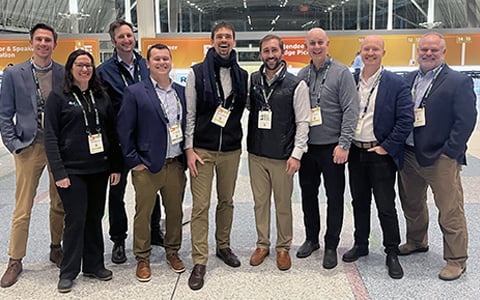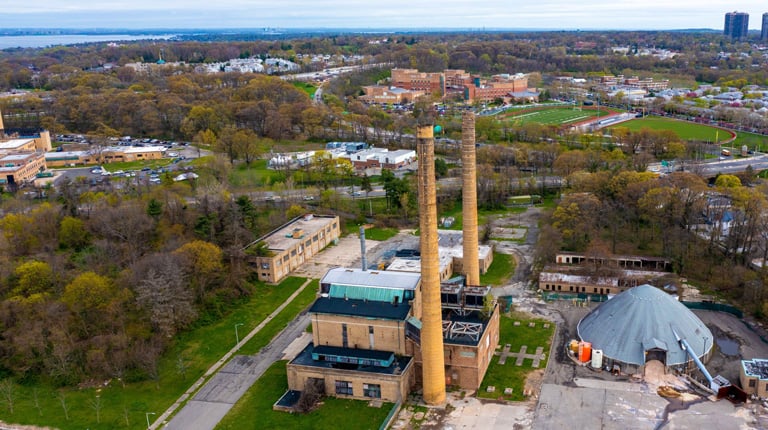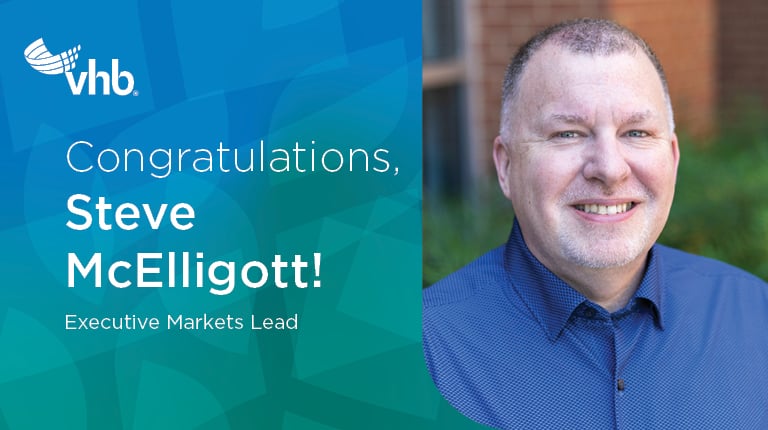
Wondering what’s next for the energy sector? New England Energy Market Leader Seth Lattrell and Corporate Director of Energy Innovation Joel Serface recently attended the RE+ Northeast conference, produced by the Solar Energy Industries Association (SEIA). Attracting over 4,000 energy industry professionals, this event was a platform for discussions on the future of solar, energy storage, hydrogen, grid edge technologies, and EV infrastructure.
Here are some of Seth’s and Joel’s takeaways:
The Northeast as a Climate Action Leader
Northeastern states have set ambitious climate goals, targeting significant reductions in carbon emissions and striving to achieve Net Zero by 2050. Expanding access to technologies like solar, battery storage, heat pumps, and electric vehicles is a critical part of this strategy. Climate plans emphasize improving built environment efficiency, expanding renewable energy delivery, and reducing energy use through building standards and efficiency.
Accelerating Project Timelines
To meet their Net Zero goals, project managers need strategies to overcome regulatory challenges that can delay solar and battery projects. For example, Massachusetts will implement new siting and permitting reforms in 2026 to streamline the process. The Energy Facilities Siting Board (EFSB) will handle permits with one consolidated process, eliminating the need for separate state and local permits.
Community Integration Is Key
Community-based projects that minimize environmental impact and reinvest in communities, such as repurposing brownfields for housing or retail use, are essential for meeting energy goals. State agencies will play a role in making energy infrastructure more affordable and accessible, as seen with MassHousing’s incentives for clean energy home improvements. Programs to support renewable energy projects, like offshore wind and green banks, are also being developed.
Emerging Technologies to Streamline Projects
New technologies, including data analytics, modeling tools, and process automation, will accelerate project timelines. AI will expedite renewable energy design, site analysis, permitting, and grid interconnection, facilitating the clean energy transition. Grid interoperability technologies and incentives will enable commercial operators to participate in revenue-generating opportunities through virtual power plants (VPPs), net metering, and Distributed Energy Resources (DERs).
The Future for Renewable Projects
Achieving clean energy goals will require a mix of solar, wind, batteries, geothermal, energy efficiency, and grid modernization. States need to balance the transition to renewables with maintaining reliable, affordable power access. This includes strategic use of battery energy storage systems, on-site commercial renewables, grid intelligence, and modernization efforts. The Northeast remains focused on delivering solutions that drive resilience and affordability.
“Our discussions at the RE+ Northeast conference with industry leaders emphasized that to advance the clean energy transition, we must overcome regulatory challenges, integrate new technologies, and focus on community-centric projects,” said Seth Lattrell. “Collaboration across sectors is essential to balance achieving our climate goals with maintaining affordability and reliability for our communities.”
“State leaders from across the Northeast underscored the importance of comprehensive master energy planning and the integration of planning, design, operations, and implementation,” said Joel Serface. “At VHB, our Energy Evolution Practice is tailored to provide lifecycle energy solutions, including onsite renewable power generation, storage, and grid interoperability. By leveraging our strong ties with key agencies and organizations, we are well-positioned to aid developers, municipalities, and state agencies in advancing their clean energy goals while driving economic growth and sustainability.”
Learn about VHB’s Energy Evolution Practice, which supports clients across the Transportation, Real Estate, Federal, Institutional, and State/Municipal markets accelerate their path to Net Zero through innovative strategies and technologies.


